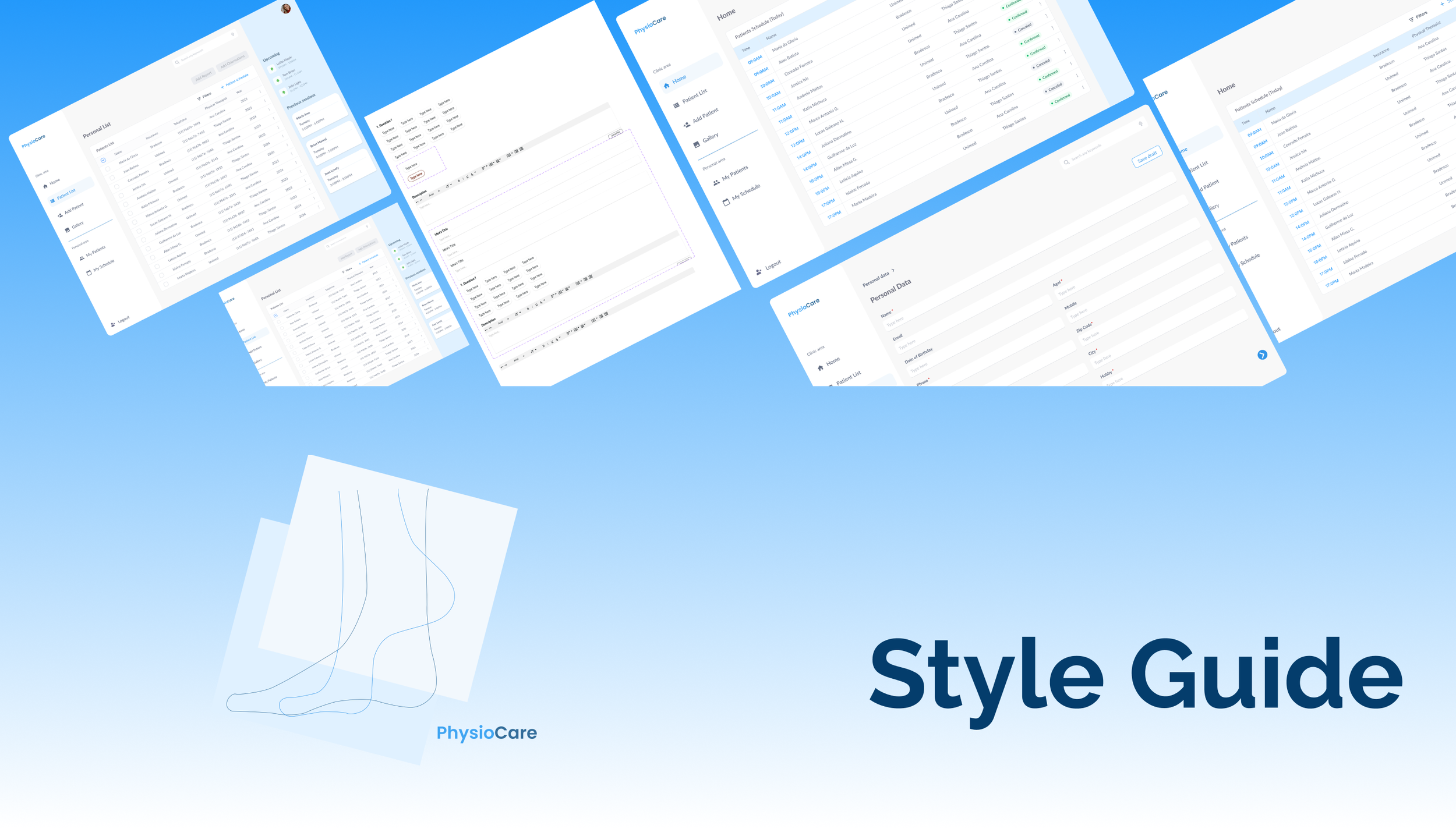
Assessing orthopedic patients
This was a solo student project centered around developing a design guideline, and a prototype for Electronic Health Records (EHRs) that accurately reflect the assessment processes of physical therapists and incorporate their valuable feedback. The project began with thorough research involving physical therapists, resulting in a comprehensive design guideline for EHRs.A Mid-fidelity prototype was then developed, followed by usability tests with target users focusing on validating both the conceptual framework and the navigational elements of the design. Following this, an iteration was conducted and a high-fidelity prototype was successfully developed.
Company
CODE University
My Role
UX Researcher and designer
Project date
10 Weeks (Dec -Feb 24)
Tools
Figma, Miro

Design Process
"How can we create a design for an Electronic Health Record that reflects the assessment processes conducted by physical therapists and incorporates the positive experiences inherent in this process?”
Research Question
Research Method Interviews
A semi-structure and narrative interview were applied to 5 physical therapists, who work in physiotherapy clinics, located in Sao Paulo, Brazil.
Semi-Structure interview: The participants were presented with a hypothetical scenario, in which a patient contacted them with a complaint of ankle pain. They were asked to describe what they'd do, starting from before the patient came to the clinic, through their arrival, and all the steps during the assessment. The hypothetical scenario create the opportunity to participants to explain their own process, making it easier to compare and see what was similar or different among them.
Narrative interview: The participants were asked about a specific assessment they conducted, during which they conveyed experiencing a sense of satisfaction afterward.
Interview process documentation ( research questions, data collection, and analysis)
Research Results
Affinity diagram and an empathy map was used to analyze the data. Data was analyzed using an affinity diagram and empathy map, revealing:
Physical therapists adjust their thinking based on the patient’s complaints. They conduct assessments in alignment with their cognitive processes, which are adaptable and context-dependent.
By not supporting the workflow the professionals prefer to write the data in the anamnesis or observation field. However this practice can harm the data consumption by other professionals.
Professionals inconsistently share patient information, preferring verbal interactions or WhatsApp audio/text if in-person isn't viable
Overview from the methods to analyse the data: Affinity Diagram and Empathy Map
Assessment Workflow
The interview results yielded a set of design guidelines organized into two distinct categories. The first category pertains to input fields that should be included to represent the assessment workflow. The image shows all the phases that physical therapists went to evaluate a patient. Those phases were included in the design.
Overview of the workflow that physical therapists go through during the assessment phase
Usability Test
Based on the findings a mid-fidelity prototype was created and tested with target users. The prototype was tested in portuguese language. The video shows one flow tested with the users.
Mid-fidelity prototype tested with 3 target users to validate concept and navigation

The user experience
After conducting the usability test, a high fidelity prototype was created with the aim of enhancing navigation and establishing a brand identity based on the findings from the test.
High-fidelity prototype tested with 3 target users to validate concept and navigation
1. Flexibilization & Customization
Problem
Recognize that not all patients will undergo every stage of the examination. The design should provide the system to dynamically adapt based on the specific needs and conditions of each patient, allowing users to customize the workflow accordingly for individualized patient care.
Design Solution
The results show that physiotherapists follow a certain process that varies according to the patient they are evaluating. My goal was to create a system that offered flexibility while maintaining a certain level of structure. The aim was to guide physiotherapists through the process while allowing enough room for adaptability.
Highlight design elements: 1) Breadcrumbs, 2) save a draft button, 3) Editable title, and 4) Insert new text field
Usability test
Overall users were positive towards the concept. They mentioned that they see value at separating information during the evaluation, so it is easy to consume the information later. Users liked the idea to upload the exam image and separate the tests in the physical assessment page
2. Audio & Transcription
Problem
The participants highlighted the utilization of WhatsApp for communication with colleagues. The introduction of an audio feature capable of transcribing information has the potential to enhance data centralization within the work environment. This improvement is anticipated to positively impact patient safety, as pertinent information will be accessible and shareable within a unified platform.
Design Solution
Add a audio feature where the physical therapist can input audio-to-text.
Usability test
The user expects to record audio and have the audio transcribed into text. They positively receive this idea.
3. Feedback Feature
Problem
The narrative interview results depict the acknowledgment received by the physical therapist from the doctor, underscoring the importance of introducing a feedback feature, where they can receive/provide feedback to colleagues. This functionality not only aids users in receiving positive feedback on their work but also enhances the refinement of data quality in the system. By incorporating such features, physical therapists can foster continuous improvement in the overall data input process.
Design Solution
A functionality that enables physical therapists to provide feedback for their peers and to document patient assessments. A High fidelity prototype was not developed for this feature, once that the feature was not validated due cultural reasons.
Usability test
The users understand the value of having the feedback session, however the overall opinion is that they personally would not use it. They mentioned two reasons: due time limitation or because they don’t feel comfortable at registering their feedback in the system.
4. Image Gallery
Problem
One relevant finding for the design of an EHRs platform that can support patient education involves the use of images. Many anatomical structures and even surgeries need to be explained to the patient, and the use of images, especially 3D, helps in visualizing the problem. One of the interviewees stated, "I take an anatomical model and explain everything I observed during the evaluation to the patient, and then I provide a detailed discussion of the anatomical structures.”
Design Solution
A gallery where the user can create their own folders and upload images and videos and organize accordingly to their needs
Usability test
Users overall find it positive. They expect to be able to upload patient picture/ video to compare the treatment phases, for example. All the users mentioned that they would use the gallery in their daily practice.
Reflection
The process discovery phase of my project involved utilizing the design diamond process and developing a template with main information such as research question, methods, problem statement, and success criteria. This enabled me to provide essential context and information about the project for other professionals to become familiar with, while also emphasizing the relevance of clearly defining the project scope. I encountered challenges in envisioning navigation and articulating the information architecture, leading me to iterate and refine the screens during the design process. The usability test involved three experienced physiotherapists and the feedback was clustered and summarized for iterative improvements. The process was difficult to document, and I questioned the necessity and level of documentation. This phase set the stage for the next steps in the project's development.







